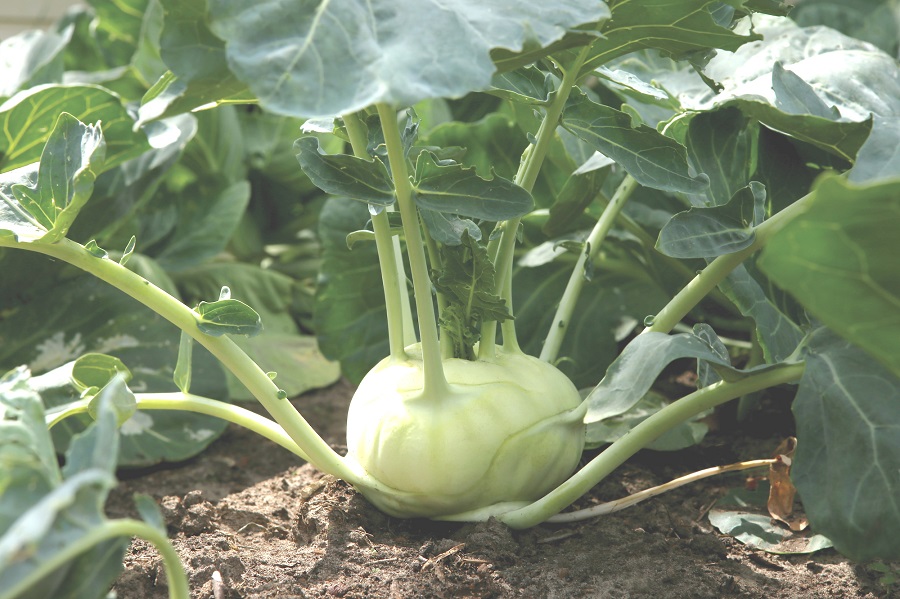Kohlrabi

Kohlrabi is cultivated for its edible stem, which can vary in color from pale green to purple, depending on the variety. The outer layer of the stem is typically removed before cooking or eating, revealing the crisp, tender, and sweet inner flesh.
Here are some key characteristics and uses of kohlrabi:
- Taste and Texture: Kohlrabi has a mild, slightly sweet flavor, similar to a blend of cabbage and broccoli stems. Its texture is crisp and can be eaten raw or cooked.
- Varieties: There are two main types of kohlrabi: green and purple. The purple variety tends to have a slightly spicier flavor but is still milder compared to many other vegetables.
- Culinary Uses: Kohlrabi can be used in a variety of culinary applications. It can be enjoyed raw, sliced into salads or as a crunchy snack when peeled and cut into sticks. It can also be steamed, roasted, stir-fried, or boiled. Kohlrabi leaves are edible as well and can be prepared like other leafy greens.
- Nutritional Value: Kohlrabi is low in calories and a good source of dietary fiber, vitamins (especially vitamin C and vitamin K), and minerals (such as potassium). It also contains antioxidants like carotenoids and phytonutrients.
- Health Benefits: Due to its high fiber content and nutrient profile, kohlrabi can support digestive health, help regulate blood sugar levels, and contribute to overall well-being. It is a healthy addition to a balanced diet.
- Availability: Kohlrabi is typically available in the spring and fall but can sometimes be found year-round in well-stocked grocery stores and farmer’s markets.
- Preparation: To prepare kohlrabi, first remove the tough outer skin with a knife or vegetable peeler. Then, you can slice, dice, or cube it for use in your preferred recipes.



Leave a Reply